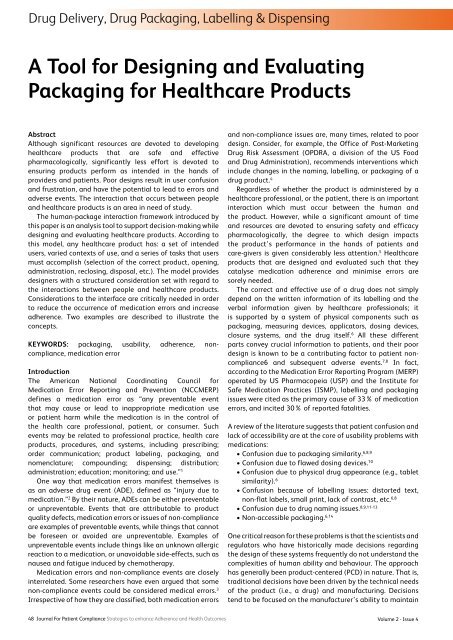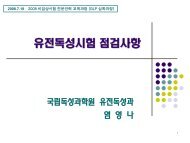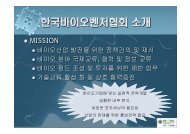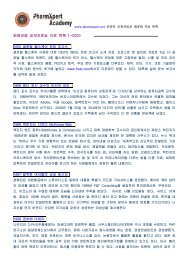PATIENT COMPLIANCE - PharmXpert Academy
PATIENT COMPLIANCE - PharmXpert Academy
PATIENT COMPLIANCE - PharmXpert Academy
You also want an ePaper? Increase the reach of your titles
YUMPU automatically turns print PDFs into web optimized ePapers that Google loves.
Drug Delivery, Drug Packaging, Labelling & DispensingA Tool for Designing and EvaluatingPackaging for Healthcare ProductsAbstractAlthough significant resources are devoted to developinghealthcare products that are safe and effectivepharmacologically, significantly less effort is devoted toensuring products perform as intended in the hands ofproviders and patients. Poor designs result in user confusionand frustration, and have the potential to lead to errors andadverse events. The interaction that occurs between peopleand healthcare products is an area in need of study.The human-package interaction framework introduced bythis paper is an analysis tool to support decision-making whiledesigning and evaluating healthcare products. According tothis model, any healthcare product has: a set of intendedusers, varied contexts of use, and a series of tasks that usersmust accomplish (selection of the correct product, opening,administration, reclosing, disposal, etc.). The model providesdesigners with a structured consideration set with regard tothe interactions between people and healthcare products.Considerations to the interface are critically needed in orderto reduce the occurrence of medication errors and increaseadherence. Two examples are described to illustrate theconcepts.KEYWORDS: packaging, usability, adherence, noncompliance,medication errorIntroductionThe American National Coordinating Council forMedication Error Reporting and Prevention (NCCMERP)defines a medication error as “any preventable eventthat may cause or lead to inappropriate medication useor patient harm while the medication is in the control ofthe health care professional, patient, or consumer. Suchevents may be related to professional practice, health careproducts, procedures, and systems, including prescribing;order communication; product labeling, packaging, andnomenclature; compounding; dispensing; distribution;administration; education; monitoring; and use.” 1One way that medication errors manifest themselves isas an adverse drug event (ADE), defined as “injury due tomedication.” 2 By their nature, ADEs can be either preventableor unpreventable. Events that are attributable to productquality defects, medication errors or issues of non-complianceare examples of preventable events, while things that cannotbe foreseen or avoided are unpreventable. Examples ofunpreventable events include things like an unknown allergicreaction to a medication, or unavoidable side-effects, such asnausea and fatigue induced by chemotherapy.Medication errors and non-compliance events are closelyinterrelated. Some researchers have even argued that somenon-compliance events could be considered medical errors. 3Irrespective of how they are classified, both medication errorsand non-compliance issues are, many times, related to poordesign. Consider, for example, the Office of Post-MarketingDrug Risk Assessment (OPDRA, a division of the US Foodand Drug Administration), recommends interventions whichinclude changes in the naming, labelling, or packaging of adrug product. 4Regardless of whether the product is administered by ahealthcare professional, or the patient, there is an importantinteraction which must occur between the human andthe product. However, while a significant amount of timeand resources are devoted to ensuring safety and efficacypharmacologically, the degree to which design impactsthe product’s performance in the hands of patients andcare-givers is given considerably less attention. 5 Healthcareproducts that are designed and evaluated such that theycatalyse medication adherence and minimise errors aresorely needed.The correct and effective use of a drug does not simplydepend on the written information of its labelling and theverbal information given by healthcare professionals; itis supported by a system of physical components such aspackaging, measuring devices, applicators, dosing devices,closure systems, and the drug itself. 6 All these differentparts convey crucial information to patients, and their poordesign is known to be a contributing factor to patient noncompliance6and subsequent adverse events. 7,8 In fact,according to the Medication Error Reporting Program (MERP)operated by US Pharmacopeia (USP) and the Institute forSafe Medication Practices (ISMP), labelling and packagingissues were cited as the primary cause of 33% of medicationerrors, and incited 30% of reported fatalities.A review of the literature suggests that patient confusion andlack of accessibility are at the core of usability problems withmedications:• Confusion due to packaging similarity. 6,8,9• Confusion due to flawed dosing devices. 10• Confusion due to physical drug appearance (e.g., tabletsimilarity). 6• Confusion because of labelling issues: distorted text,non-flat labels, small print, lack of contrast, etc. 6,8• Confusion due to drug naming issues. 8,9,11-13• Non-accessible packaging. 6,14One critical reason for these problems is that the scientists andregulators who have historically made decisions regardingthe design of these systems frequently do not understand thecomplexities of human ability and behaviour. The approachhas generally been product-centered (PCD) in nature. That is,traditional decisions have been driven by the technical needsof the product (i.e., a drug) and manufacturing. Decisionstend to be focused on the manufacturer’s ability to maintain48 Journal For Patient Compliance Strategies to enhance Adherence and Health OutcomesVolume 2 - Issue 4
















